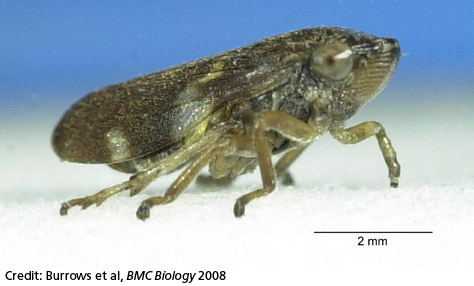Bug's Incredible Leaps Explained

Lickety-split, insects called froghoppers can leap a distance of 100 times their body length. Now, scientists have found the bugs' secret: They sport bow-like structures that work like catapults.
Froghoppers are also called spittlebugs because the nymph stage of these insects produces a frothy sap for protection. The adults store energy in a pair of bow-shaped structures made of both a hard cuticle material and a rubbery protein called resilin, new research found. The structures are attached to the hind legs.
When the insect contracts its muscles to jump, these structures flex like an archery bow. Upon recoil, the "bow" sends the insect forward with a force that can reach more than 400 times its body mass.
Since the hopper's arching device is made of both hard and elastic materials, it can resist damage even if bent for a long time. In fact, froghoppers hold their bows in a ready position so they are prepared to leap at a moment's notice. They can also jump repeatedly without damaging the body, the researchers say.
As nymphs, froghoppers lack the elastic protein in their bow structures. And as expected, the little ones don't jump until they develop into adults.
The finding is published today in the journal BMC Biology.
- Video – See the Froghoppers Jump
- Top 10 Amazing Animal Abilities
- Image Gallery: Backyard Bugs
Get the world’s most fascinating discoveries delivered straight to your inbox.



